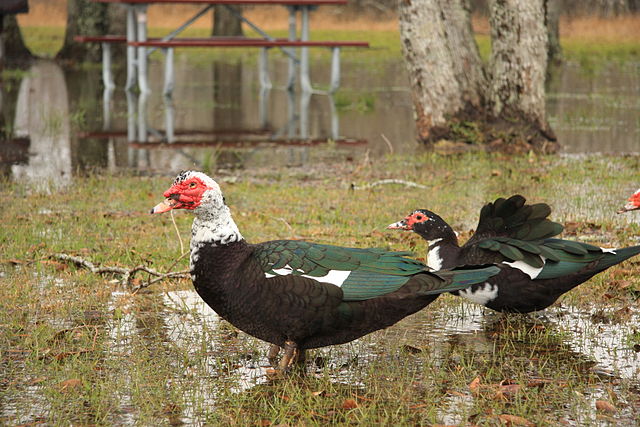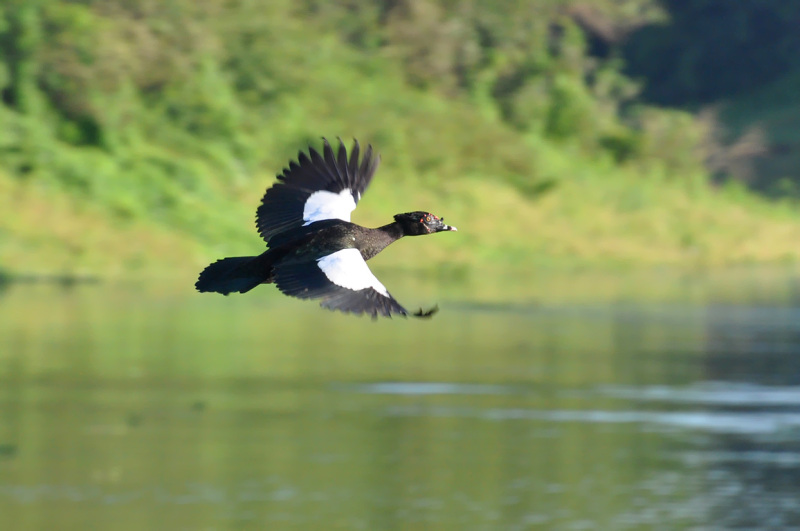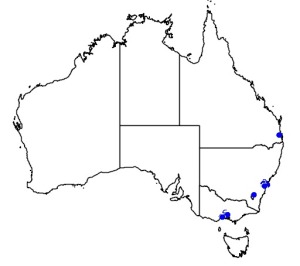Colours
Distinguishing features
The bird is predominantly black and white, with the back feathers being iridescent and glossy in males, while the females are more drab. The amount of white on the neck and head is variable, as well as the bill, which can be yellow, pink, black, or any mixture of these. They may have white patches or bars on the wings, which become more noticeable during flight. Both sexes have pink or red wattles around the bill, those of the male being larger and more brightly colored.
On the head, the wild male has short crest on the nape. The bill is black with a speckling of pale pink. A blackish or dark red knob can be seen at the bill base, and the bare skin of the face is similar to that in color. The eyes are yellowish-brown. The legs and webbed feet are blackish. The wild female is similar in plumage, but is also much smaller, and she has feathered face and lacks the prominent knob. The juvenile is duller overall, with little or no white on the upperwing. Domesticated birds may look similar; most are dark brown or black mixed with white, particularly on the head. Other colors such as lavender or all-white are also seen. Both sexes have a nude black-and-red or all-red face; the drake also has pronounced caruncles at the base of the bill and a low erectile crest of feathers.
Ducklings are mostly yellow with buff-brown markings on the tail and wings. Some domesticated ducklings have a dark head and blue eyes, others a light brown crown and dark markings on their nape. They are agile and speedy precocial birds. (Wikipedia)
Size
- Up to 86 cm (Length of specimen) - applies to Males
- Up to 64 cm (Length of specimen) - applies to Females
Wingspan
- From 137 cm to 152 cm - applies to Adults
Synonyms
Comments
Native to Mexico, Central and South America
by Geoffrey Shuetrim
Distribution
Distribution and habitat preferences
native to Mexico, Central, and South America. Small wild and feral breeding populations have established themselves in the United States, particularly in the lower Rio Grande Valley of Texas, as well as in many other parts of North America, including southern Canada. Feral Muscovy Ducks are found in Australia and New Zealand and have also been reported in parts of Europe. (Wikipedia)
Diet
It eats plant material obtained by grazing or dabbling in shallow water, and small fish, amphibians, reptiles, crustaceans, insects, and millipedes. (Wikipedia)
Web resources
References
- Simpson, K., N. Day and P. Trusler (2004). Field Guide to Birds of Australia: 7th Edition Penguin Group (Australia), Camberwell, Victoria.



